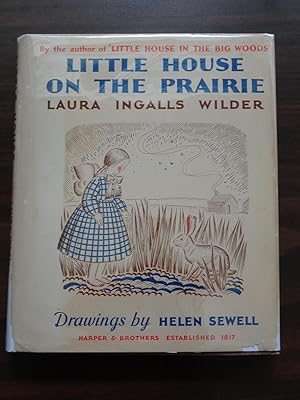Some months ago, I agreed to speak with Glynnis MacNicol about a podcast that she was doing with Emily Marinoff for iHeartPodcasts. She'd read my blog posts about Little House on the Prairie and decided to see if I would be interested in being interviewed for the podcast. I've done a lot of work on that book series and given a few interviews. I said yes and we talked for an hour, maybe more. I don't remember. Anyway, the first episode of the podcast dropped today. I listened to it. My impressions so far are good. MacNicol is trying to figure out her attachment to the books. The first episode is described like this:
Host Glynnis MacNicol has loved Laura Ingalls Wilder and her Little House books since she was a kid. She’s not alone in this, a lot of people have a strong devotion to Laura. Some travel miles to visit her houses and attend pageants dedicated to Laura and her books. But over the years, Laura, her work, and her legacy have become increasingly controversial. How do we reckon with the things we loved as a child? The stuff that made us who we are? Glynnis takes to the road to find out, driving across the midwest to all of Laura’s houses. First stop: Walnut Grove, Minnesota.
I'm not sure if I'll be able to do a blog post after each one. I have a busy summer ahead of me! I'm definitely going to listen and if I find myself needing to respond, I will. Here's some thoughts about episode one, "Now is Now."
The first part is similar to what I hear when people share their memories of reading the books when they were young. Later though, I hear the questioning. The reckoning.
That part begins when MacNicol speaks to Keiko Satomi, at approximately the 30 minute mark. Satomi starts by talking about reading the books in 2nd or 3rd grade, captivated by the sensory details and scale that were so different from where she grew up in Japan on a small island surrounded by water. MacNicol knew there was a Japanese fan base for Wilder but thought it was due to the television show. She finds out it goes back further than that, to WWII. Satomi, as an adult, says she realized there was a political dimension to her having read the books as a child. It was, she said, "calculated to bring that literature for a certain purpose, a political reason." That realization gave her mixed feelings about the books. After Hiroshima and Nagasaki, MacNicol says, The Long Winter was one of the first books General Douglas MacArthur selected for translation into Japanese. That really piqued my interest, so I poked around a bit to see what I might learn about that.
In 2021, Michael B. Pass at the University of Ottawa wrote an article called Red Hair in a Global World: A Japanese History of Anne of Green Gables and Prince Edward Island for the Journal of L.M. Montgomery Studies. In it, Pass writes that the Supreme Commander for the Allied Powers (SCAP) decreed it would license foreign books if they furthered the objectives of the occupation by helping democratize Japanese society. MacArthur's wife, Jean, recommended Wilder's The Long Winter. In 2006, Noriko Suzuki wrote "Japanese Democratization and the Little House Books: The Relation between General Head Quarters and The Long Winter in Japan after World War II in Children's Literature Association Quarterly, Vol 31, #1. Suzuki's article has a lot of fascinating details, and they write that MacArthur "saw the Little House books as an effective educational apparatus for inculcating American democracy in Japanese schoolchildren." They were placed in libraries and schools where they became deeply popular.
In the podcast, Satomi says she thinks differently now about the books because of the ways that Native peoples are depicted. I'm glad for that because in my experience doing workshops with educators, they don't remember the passages in the series that depict Native peoples as savage or primitive. I hope some will hear what Satomi says and will look again at their embrace of the books. I think MacNicol is doing that with the podcast. I wonder where she'll end up?
I've written a little about the misrepresentations in The Long Winter and may do more, later.
I've written a little about the misrepresentations in The Long Winter and may do more, later.
A quick same-day update: contradictions abound. The translation of The Long Winter was done in 1949. The goal in making it available in Japan was over democracy. Think back to US society at that time. How democratic was it? Was everyone treated the same? Could everyone vote?















